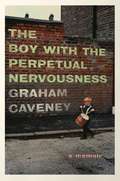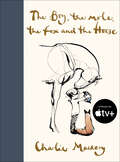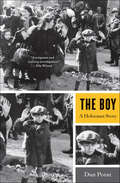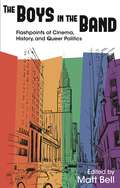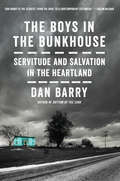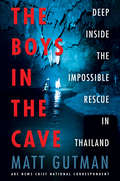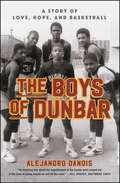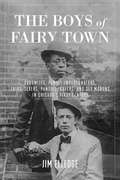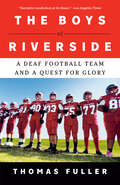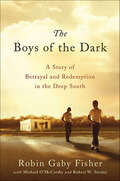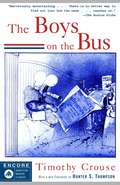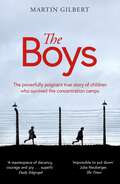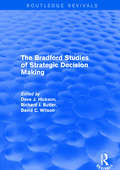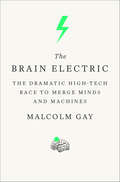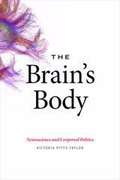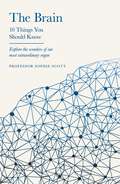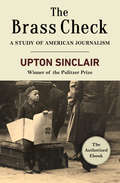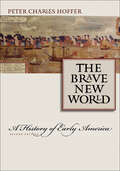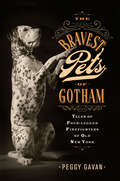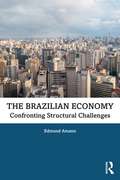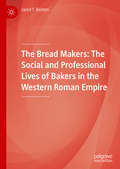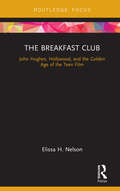- Table View
- List View
The Boy with the Perpetual Nervousness: A Memoir
by Graham CaveneyAn enthralling, emotional memoir that recounts the ups and downs of coming-of-age, set against the music and literature of the 1970s.Raised in a small town in the north of England known primarily for its cotton mills, football team, and its deep roots in the “Respectable Working Class,” Graham Caveney armed himself against the confusing nature of adolescence with a thick accent, a copy of Kafka, and a record collection including the likes of the Buzzcocks and Joy Division. All three provided him the opportunity to escape, even if just in mind, beyond his small-town borders. But, when those passions are noticed and preyed upon by a mentor, everything changes. Now, as an adult, Caveney attempts to reconcile his past and present, coming to grips with both the challenges and wonder of adolescence, music, and literature. By turns angry, despairing, beautifully written, shockingly funny, and ultimately redemptive, The Boy with Perpetual Nervousness is a tribute to the power of the arts—and a startling, original memoir that “feels as if it had to be written, and demands to be read” (The Guardian UK).
The Boy, the Mole, the Fox and the Horse
by Charlie Mackesy#1 NEW YORK TIMES BESTSELLER · WALL STREET JOURNAL BESTSELLER · USA TODAY BESTSELLER “The Boy, the Mole, the Fox and the Horse is not only a thought-provoking, discussion-worthy story, the book itself is an object of art.”- Elizabeth Egan, The New York TimesFrom British illustrator, artist, and author Charlie Mackesy comes a journey for all ages that explores life’s universal lessons, featuring 100 color and black-and-white drawings.“What do you want to be when you grow up?” asked the mole.“Kind,” said the boy.Charlie Mackesy offers inspiration and hope in uncertain times in this beautiful book, following the tale of a curious boy, a greedy mole, a wary fox and a wise horse who find themselves together in sometimes difficult terrain, sharing their greatest fears and biggest discoveries about vulnerability, kindness, hope, friendship and love. The shared adventures and important conversations between the four friends are full of life lessons that have connected with readers of all ages.
The Boy: A Holocaust Story
by Dan PoratA cobblestone road. A sunny day. A soldier. A gun. A child, arms high in the air. A moment captured on film. But what is the history behind arguably the most recognizable photograph of the Holocaust? In The Boy: A Holocaust Story, the historian Dan Porat unpacks this split second that was immortalized on film and unravels the stories of the individuals—both Jews and Nazis—associated with it.The Boy presents the stories of three Nazi criminals, ranging in status from SS sergeant to low-ranking SS officer to SS general. It is also the story of two Jewish victims, a teenage girl and a young boy, who encounter these Nazis in Warsaw in the spring of 1943. The book is remarkable in its scope, picking up the lives of these participants in the years preceding World War I and following them to their deaths. One of the Nazis managed to stay at large for twenty-two years. One of the survivors lived long enough to lose a son in the Yom Kippur War. Nearly sixty photographs dispersed throughout help narrate these five lives. And, in keeping with the emotional immediacy of those photographs, Porat has deliberately used a narrative style that, drawing upon extensive research, experience, and oral interviews, places the reader in the middle of unfolding events.
The Boys in the Band: Flashpoints of Cinema, History, and Queer Politics
by Matt BellThe Boys in the Band’s debut was revolutionary for its fictional but frank presentation of a male homosexual subculture in Manhattan. Based on Mart Crowley’s hit Off-Broadway play from 1968, the film’s two-hour running time approximates real time, unfolding at a birthday party attended by nine men whose language, clothing, and behavior evoke a range of urban gay “types.” Although various popular critics, historians, and film scholars over the years have offered cursory acknowledgment of the film’s importance, more substantive research and analysis have been woefully lacking. The film’s neglect among academics belies a rich and rewarding object of study. The Boys in the Band merits not only the close reading that should accompany such a well-made text but also recognition as a landmark almost ideally situated to orient us amid the highly complex, shifting cultural terrain it occupied upon its release—and has occupied since. The scholars assembled here bring an invigorating variety of methods to their considerations of this singular film. Coming from a wide range of academic disciplines, they pose and answer questions about the film in remarkably different ways. Cultural analysis, archival research, interviews, study of film traditions, and theoretical framing intensify their revelatory readings of the film. Many of the essays take inventive approaches to longstanding debates about identity politics, and together they engage with current academic work across a variety of fields that include queer theory, film theory, gender studies, race and ethnic studies, and Marxist theory. Addressing The Boys in the Band from multiple perspectives, these essays identify and draw out the film’s latent flashpoints—aspects of the film that express the historical, cinematic, and queer-political crises not only of its own time, but also of today. The Boys in the Band is an accessible touchstone text in both queer studies and film studies. Scholars and students working in the disciplines of film studies, queer studies, history, theater, and sociology will surely find the book invaluable and a shaping influence on these fields in the coming years.
The Boys in the Bunkhouse: Servitude and Salvation in the Heartland
by Dan BarryA Dickensian tale from America’s heartland,New York Times columnist Dan Barry’s The Boys in the Bunkhouse is a luminous work of social justice. Told with compassion and compelling detail, this is the harrowing yet uplifting story of the exploitation and abuse of a resilient group of men with intellectual disability, and the heroic efforts of those who helped them to find justice and reclaim their lives.In the tiny Iowa farm town of Atalissa, dozens of men, all with intellectual disability and all from Texas, lived in an old schoolhouse. Before dawn each morning, they were bussed to a nearby processing plant, where they eviscerated turkeys in return for food, lodging, and $65 a month. They lived in near servitude for more than thirty years, enduring increasing neglect, exploitation, and physical and emotional abuse—until state social workers, local journalists, and one tenacious labor lawyer helped these men achieve freedom.Drawing on exhaustive interviews, Dan Barry dives deeply into the lives of the men, recording their memories of suffering, loneliness and fleeting joy, as well as the undying hope they maintained despite their traumatic circumstances. Barry explores how a small Iowa town remained oblivious to the plight of these men, analyzes the many causes for such profound and chronic negligence, and lays out the impact of the men’s dramatic court case, which has spurred advocates—including President Obama—to push for just pay and improved working conditions for people living with disabilities.The Boys in the Bunkhouse is more than just inspired storytelling. It is a clarion call for a vigilance that ensures inclusion and dignity for all.
The Boys in the Cave: Deep Inside the Impossible Rescue in Thailand
by Matt GutmanFrom award-winning ABC News Chief National Correspondent Matt Gutman, and written using exclusive interviews and information comes the definitive account of the dramatic story that gripped the world: the miracle rescue of twelve boys and their soccer coach trapped in a flooded cave miles underground for nearly three weeks—a pulse-pounding page-turner by a reporter who was there every step of their journey out. After a practice in June 2018, a Thai soccer coach took a dozen of his young players to explore a famous but flood-prone cave. It was one of the boys’ birthday, but neither he nor the dozen resurfaced. Worried parents and rescuers flocked to the mouth of a cave that seemed to have swallowed the boys without a trace. Ranging in age from eleven to sixteen, the boys were all members of the Wild Boars soccer team. When water unexpectedly inundated the cave, blocking their escape, they retreated deeper inside, taking shelter in a side cavern. While the world feared them dead, the thirteen young souls survived by licking the condensation off the cave’s walls, meditating, and huddling together for warmth.In this thrilling account, ABC News Chief National Correspondent Matt Gutman recounts this amazing story in depth and from every angle, exploring their time in the cave, the failed plans and human mistakes that nearly doomed them, and the daring mission that ultimately saved them. Gutman introduces the elite team of volunteer divers who risked death to execute a plan so risky that its American planners admitted, “for us, success would have meant getting just one boy out alive.” He takes you inside the meetings where life and death decisions were grimly made and describes how these heroes pulled off an improbable rescue under immense pressure, with the boys’ desperate parents and the entire world watching. One of the largest rescues in history was in doubt until the very last moment. Matt Gutman covered the story intensively, went deep inside the caves himself, and interviewed dozens of rescuers, experts and eye-witnessed around the world. The result is this pulse-pounding page-turner that vividly recreates this extraordinary event in all its intensity—and documents the ingenuity and sacrifice it took to succeed.
The Boys of Dunbar: A Story of Love, Hope, and Basketball
by Alejandro DanoisThe inspiring true story of a remarkable coach whose superb undefeated high-school basketball team in 1980s Baltimore produced four NBA players and gave hope to a desperate neighborhood and city—&“a feel-good story that is timely as well as true&” (Glenn C. Altschuler, Florida Courier).As the crack epidemic swept across inner-city America in the early 1980s, the streets of Baltimore were crime ridden. For poor kids from the housing projects, the future looked bleak. But basketball could provide the quickest ticket out, an opportunity to earn a college scholarship and perhaps even play in the NBA. Dunbar High School had one of the most successful basketball programs in the country; in the early 1980s, the Dunbar Poets were arguably the best high school team of all time. Four starting players—Muggsy Bogues, Reggie Williams, David Wingate, and Reggie Lewis—would eventually play in the NBA, an unheard-of success rate. In The Boys of Dunbar, Alejandro Danois revisits the 1981–1982 season with the Poets as the team conquered all its opponents. But more than that, he takes us into the lives of these kids, and especially of Coach Bob Wade, a former NFL player from the same neighborhood who knew that the basketball court, and the lessons his players would learn there, held the key to the future. &“[Danois&’] tale of the basketball exploits of a handful of high school students in the 1980s shows young men motivated by their coach and other recreation leaders to dream beyond the hardship of their geography&” (Bijan C. Bayne, The Washington Post). &“Inspirational stories can be found everywhere in high-school sports, but Dunbar and its legendary coach, Bob Wade, stand out&” (Booklist). The Boys of Dunbar will leave you cheering every victory.
The Boys of Fairy Town: Sodomites, Female Impersonators, Third-Sexers, Pansies, Queers, and Sex Morons in Chicago's First Century
by Jim ElledgeA history of gay Chicago told through the stories of queer men who left a record of their sexual activities in the Second City, this book paints a vivid picture of the neighborhoods where they congregated while revealing their complex lives. Some, such as reporter John Wing, were public figures. Others, like Henry Gerber, who created the first "homophile" organization in the United States, were practically invisible to their contemporaries. But their stories are all riveting. Female impersonators and striptease artists Quincy de Lang and George Quinn were arrested and put on trial at the behest of a leader of Chicago's anti-"indecency" movement. African American ragtime pianist Tony Jackson's most famous song, "Pretty Baby," was written about one of his male lovers. Alfred Kinsey's explorations of the city's netherworld changed the future of American sexuality while confirming his own queer proclivities. What emerges from The Boys of Fairy Town is a complex portrait and a virtually unknown history of one of the most vibrant cities in the United States.
The Boys of Fairy Town: Sodomites, Female Impersonators, Third-Sexers, Pansies, Queers, and Sex Morons in Chicago's First Century
by Jim ElledgeA history of gay Chicago told through the stories of queer men who left a record of their sexual activities in the Second City, this book paints a vivid picture of the neighborhoods where they congregated while revealing their complex lives. Some, such as reporter John Wing, were public figures. Others, like Henry Gerber, who created the first "homophile" organization in the United States, were practically invisible to their contemporaries. But their stories are all riveting. Female impersonators and striptease artists Quincy de Lang and George Quinn were arrested and put on trial at the behest of a leader of Chicago's anti-"indecency" movement. African American ragtime pianist Tony Jackson's most famous song, "Pretty Baby," was written about one of his male lovers. Alfred Kinsey's explorations of the city's netherworld changed the future of American sexuality while confirming his own queer proclivities. What emerges from The Boys of Fairy Town is a complex portrait and a virtually unknown history of one of the most vibrant cities in the United States.
The Boys of Riverside: A Deaf Football Team and a Quest for Glory
by Thomas FullerNAMED A BEST BOOK BY BOOK RIOT, AND MORE! • The incredible story of an all-deaf high school football team&’s triumphant climb from underdog to undefeated, their inspirational brotherhood, a fascinating portrait of deafness in America, and the indefatigable head coach who spearheaded the team, by New York Times reporter and Page One Correspondent, Thomas Fuller."The Boys of Riverside is another example of how anyone can achieve their dreams, making what appears impossible, possible.&” —Marlee Matlin, Academy Award winner"Remarkable"—Wall Street Journal • "Narrative nonfiction at its finest, filled with drama, detail and action."—Los Angeles Times • "Inspiring." —Parade.comIn November 2021, an obscure email from the California Department of Education landed in New York Times reporter, Thomas Fuller&’s, inbox. The football team at the California School for the Deaf in Riverside, a state-run school with only 168 high school students, was having an undefeated season. After years of covering war, wildfires, pandemic, and mass shootings, Fuller was captivated by the story of this group of high school boys. It was uplifting. During the gloom of the pandemic, it was a happy story. It was a sports story but not an ordinary one, built on the chemistry between a group of underestimated boys and their superhero advocate coach, Keith Adams, a deaf former athlete himself. The team, and Adams, tackled the many stereotypes and seemed to be succeeding. Fuller packed his bags and drove seven hours to the Riverside campus.The Boys of Riverside looks back at the historic 2021 and 2022 seasons in which the California School for the Deaf chased history. It follows the personal journeys of their dynamic deaf head coach, and a student who spent the majority of the season sleeping in his father&’s car in the Target parking lot. It tells the story of a fiercely committed player who literally played through a broken leg in order not to miss a crucial game, as well as myriad other heart-wrenching and uplifting narratives of players who found common purpose. Through their eyes, Fuller reveals a portrait of high school athletics, inspiring camaraderie, and deafness in America.
The Boys of the Dark: A Story of Betrayal and Redemption in the Deep South
by Robin Gaby Fisher Michael O'McCarthy Robert W. StraleyA story that garnered national attention, this is the harrowing tale of two men who suffered abuses at a reform school in Florida in the 1950s and 60s, and who banded together fifty years later to confront their attackers.Michael O'McCarthy and Robert W. Straley were teens when they were termed "incorrigible youth" by authorities and ordered to attend the Florida School for Boys. They discovered in Marianna, the "City of Southern Charm," an immaculately groomed campus that looked more like an idyllic university than a reform school. But hidden behind the gates of the Florida School for Boys was a hell unlike any they could have imagined. The school's guards and administrators acted as their jailers and tormentors. The boys allegedly bore witness to assault, rape, and possibly even murder.For fifty years, both men---and countless others like them---carried their torment in silence. But a series of unlikely events brought O'McCarthy, now a successful rights activist, and Straley together, and they became determined to expose the Florida School for Boys for what they believed it to be: a youth prison with a century-long history of abuse. They embarked upon a campaign that would change their lives and inspire others.Robin Gaby Fisher, a Pulitzer Prize--winning journalist and author of the New York Times bestselling After the Fire, collaborates with Straley and O'McCarthy to offer a riveting account of their harrowing ordeal. The book goes beyond the story of the two men to expose the truth about a century-old institution and a town that adopted a Nuremberg-like code of secrecy and a government that failed to address its own wrongdoing. What emerges is a tale of strength, resolve, and vindication in the face of the kinds of terror few can imagine.
The Boys on the Bus
by Hunter S. Thompson Timothy CrouseCheap booze. Flying fleshpots. Lack of sleep. Endless spin. Lying pols. Just a few of the snares lying in wait for the reporters who covered the 1972 presidential election. Traveling with the press pack from the June primaries to the big night in November, Rolling Stone reporter Timothy Crouse hopscotched the country with both the Nixon and McGovern campaigns and witnessed the birth of modern campaign journalism. The Boys on the Bus is the raucous story of how American news got to be what it is today. With its verve, wit, and psychological acumen, it is a classic of American reporting.NOTE: This edition does not include photographs.
The Boys: The true story of 732 young concentration camp survivors
by Sir Martin Gilbert'Impossible to put down ... This is a book about coming out of hell, about great evil, about the triumph of the human spirit, and about the great goodness on the part of those who helped. One is left with hope, and admiration' Julia Neuberger, THE TIMES'A story of human resilience, fortitude and victory that restores the readers' hope for mankind' SUNDAY TIMES'This is the story of human beings sucked into a vortex of destruction in which family, identity, religion and culture were all ripped away. A sense of near-miraculous calm descends when the Boys finally arrive in Britain, when human fortitude finally prevails over absolute evil' David Cesarani, TLSIn August 1945, the first of 732 child survivors of the Holocaust reached Britain. First settled in the Lake District, they formed a tightly knit group of friends whose terrible shared experience is almost beyond imagining. This is their story, which begins in the lost communities of pre-World War II central Europe, moves through ghetto, concentration camp and death march, to liberation, survival, and finally, fifty years later, a deeply moving reunion. Martin Gilbert has brought together the recollections of this remarkable group of survivors to tell their astonishing stories.
The Bradford Studies of Strategic Decision Making
by David C. Wilson David J. Hickson Richard J. ButlerThis title was first published in 2001. This volume brings together the 25-year output of the longest running programme of research into the making of decisions by top management. It describes and explains the processes of arriving at major decisions and how they are affected by the issue under decision, the form of organization and national differences and then, finally, success and failure in implementation. The programme continues with research on routes in successfully managing implementation.
The Braille Encyclopedia: Brief Essays on Altered Sight
by Naomi CohnAs befits this daring exploration of a life that defies clear categories and boundaries, Naomi Cohn's revelatory memoir The Braille Encyclopedia: Brief Essays on Altered Sight shapeshifts between lyric essay and prose poetry and traverses the divides between lived experience, history, and scientific knowledge. Told in the form of imagined alphabetical encyclopedia entries, this meditation on progressive vision loss examines and illuminates Cohn's at first halting then avid embrace of braille as part of relearning to read and write as an adult. Using etymology, historical and medical research, and personal vignettes, this abecedarian collection of linked micro-essays and prose poems is both Cohn's singular story of grieving and refashioning a life built around words and an evocation of the larger discussion of how our society views disability. The Braille Encyclopedia is poignant, playful, and wry, providing a literary reckoning of the technical and emotional aspects of facing the loss of sight.
The Brain Electric: The Dramatic High-Tech Race to Merge Minds and Machines
by Malcolm GayThe gripping and revelatory story of the dramatic race to merge the human brain with machinesLeading neuroscience researchers are racing to unlock the secrets of the mind. On the cusp of decoding brain signals that govern motor skills, they are developing miraculous technologies to enable paraplegics and wounded soldiers to move prosthetic limbs, and the rest of us to manipulate computers and other objects through thought alone. These fiercely competitive scientists are vying for Defense Department and venture capital funding, prestige, and great wealth. Part life-altering cure, part science fiction, part military dream, these cutting-edge brain-computer interfaces promise to improve lives—but also hold the potential to augment soldiers' combat capabilities. In The Brain Electric, Malcolm Gay follows the dramatic emergence of these technologies, taking us behind the scenes into the operating rooms, start-ups, and research labs where the future is unfolding. With access to many of the field's top scientists, Gay illuminates this extraordinary race—where science, medicine, profit, and war converge—for the first time. But this isn't just a story about technology. At the heart of this research is a group of brave, vulnerable patient-volunteers whose lives are given new meaning through participating in these experiments. The Brain Electric asks us to rethink our relationship to technology, our bodies, even consciousness itself—challenging our assumptions about what it means to be human.
The Brain's Body: Neuroscience and Corporeal Politics
by Victoria Pitts-TaylorIn The Brain's Body Victoria Pitts-Taylor brings feminist and critical theory to bear on new development in neuroscience to demonstrate how power and inequality are materially and symbolically entangled with neurobiological bodies. Pitts-Taylor is interested in how the brain interacts with and is impacted by social structures, especially in regard to race, class, gender, sexuality, and disability, as well as how those social structures shape neuroscientific knowledge. Pointing out that some brain scientists have not fully abandoned reductionist or determinist explanations of neurobiology, Pitts-Taylor moves beyond debates over nature and nurture to address the politics of plastic, biosocial brains. She highlights the potential of research into poverty's effects on the brain to reinforce certain notions of poor subjects and to justify particular forms of governance, while her queer critique of kinship research demonstrates the limitations of hypotheses based on heteronormative assumptions. In her exploration of the embodied mind and the "embrained" body, Pitts-Taylor highlights the inextricability of nature and culture and shows why using feminist and queer thought is essential to understanding the biosociality of the brain.
The Brain: 10 Things You Should Know
by Professor Sophie ScottUncover the mind-blowing complexities of the brain and how it affects our personalities, behaviours and more.Written by Professor of Cognitive Neuroscience at UCL, Sophie Scott, and composed of ten mind-blowing yet accessible essays, The Brain guides you through the astounding complexities of the organ that makes you, you. From diving into the networks of neurons that are vital to our functioning, to the way our brains differ from one another and how neuroscience is shaping up for the future; this book is a guide to our most powerful and awe-inspiring body part.If you have ever wondered what's going on inside your head (or someone else's), this book will be a fascinating and enthralling read.
The Brain: 10 Things You Should Know
by Professor Sophie ScottUncover the mind-blowing complexities of the brain and how it affects our personalities, behaviours and more.Written by Professor of Cognitive Neuroscience at UCL, Sophie Scott, and composed of ten mind-blowing yet accessible essays, The Brain guides you through the astounding complexities of the organ that makes you, you. From diving into the networks of neurons that are vital to our functioning, to the way our brains differ from one another and how neuroscience is shaping up for the future; this book is a guide to our most powerful and awe-inspiring body part.If you have ever wondered what's going on inside your head (or someone else's), this book will be a fascinating and enthralling read.
The Brass Check: A Study of American Journalism (American Journalists Ser.)
by Upton SinclairA muckraking exposé of corruption in American journalism from the Pulitzer Prize-winning author of The Jungle Upton Sinclair dedicated his life to documenting the destructive force of unbridled capitalism. In this influential study, he takes on the effect of money and power on mass media, arguing that the newspapers, magazines, and wire services of the Progressive era formed "a class institution serving the rich and spurning the poor." In the early twentieth century, a "brass check" was a token purchased by brothel patrons. By drawing a comparison between journalists and prostitutes, Sinclair highlights the total control publishers such as William Randolph Hearst exerted over their empires. Reporters and editors were paid to service the financial and political interests of their bosses, even if that meant misrepresenting the facts or outright lying. Sinclair documents specific cases, including the Ludlow Massacre of 1914 and the Red Scare whipped up by Hearst's New York Journal and other newspapers, in which major news outlets ignored the truth in favor of tabloid sensationalism. Sinclair considered The Brass Check to be his most important and most dangerous book. Nearly a century later, his impassioned call for reform is timelier than ever. This ebook has been authorized by the estate of Upton Sinclair.
The Brave New World: A History of Early America
by Peter Charles HofferThe distinguished historian “does a remarkable job” with this lively and comprehensive textbook—now in a new, expanded edition (Daniel P. Kotzin, Teaching History).The Brave New World covers the span of early American history, from 30,000 years before Europeans ever landed on North American shores to creation of the new nation. With its exploration of the places and peoples of early America, this volume brings together the most recent scholarship on the colonial and revolutionary eras, Native Americans, slavery, politics, war, and the daily lives of ordinary people. The revised, enlarged edition includes a new chapter carrying the story through the American Revolution, the War for Independence, and the creation of the Confederation. Additional material on the frontier, the Southwest and the Caribbean, the slave trade, religion, science and technology, and ecology broadens the text, and maps drawn especially for this edition will enable readers to follow the story more closely. The bibliographical essay, one of the most admired features of the first edition, has been expanded and brought up to date.Peter Charles Hoffer combines the Atlantic Rim scholarship with a Continental perspective, illuminating early America from all angles—from its first settlers to the Spanish Century, from African slavery to the Salem witchcraft cases, from prayer and drinking practices to the development of complex economies, from the colonies’ fight for freedom to an infant nation’s struggle for political and economic legitimacy. Wide-ranging in scope, inclusive in content, the revised edition of The Brave New World continues to provide professors, students, and historians with an engaging and accessible history of early North America.
The Bravest Pets of Gotham: Tales of Four-Legged Firefighters of Old New York
by Peggy GavanIn the late 1800s and early 1900s, the New York Fire Department permitted firemen to keep one dog, one cat, or singing birds in their firehouse. Since the firemen were required to live and work at the firehouse full-time, these animal mascots—along with the horses that pulled the fire trucks—were their constant companions, making a dangerous workplace feel more like home. The Bravest Pets of Gotham takes readers on a fun historical tour of Old New York, sharing touching and comical stories about the bond between FDNY firefighters and their four-legged or feathered friends. The book contains more than one hundred astonishing, emotional, and sometimes hilariously absurd tales of the FDNY animal mascots whose extraordinary intelligence, acts of bravery, and funny antics deserve to be remembered. Some anecdotes depict fire companies that broke the one-pet rule and welcomed a veritable menagerie of animals into their firehouses, including goats, turtles, and even monkeys. Whether you are an animal lover, a history buff, or a fan of firefighting, The Bravest Pets of Gotham is full of stories that will thrill and amuse you.
The Brazilian Economy: Confronting Structural Challenges
by Edmund AmannThe Brazilian economy has long been defined by its enormous potential. Over the past 30 years, some of this has at last been realised. Latin America’s largest economy has rapidly risen in global importance while poverty at home has declined. Yet, despite periods of progress, Brazil remains prone to economic crisis. It is also beset with stubborn inefficiencies and income disparities. This book considers the structural challenges which will need to be overcome if Brazil is to break with the past and finally embark on a path of sustained, inclusive growth. This book aims to give the reader a clear knowledge of the nature of these structural challenges, why they exist and the effectiveness of attempts to overcome them. Through this, readers will gain a deep understanding of the contemporary Brazilian economy. The challenges discussed fall into three areas: those centring on competitiveness and the supply side, those arising from critical macroeconomic issues and those connected with environmental sustainability and social inclusion. This volume systematically examines each of these domains, highlighting such vital topics as export competitiveness, human capital formation, environmental policy and the role of financial market reform. Where appropriate, this book sets Brazil’s experience in an international comparative context. It points out that many of the challenges faced by Brazil are shared by other emerging economies. In this sense, the policy lessons which stem from this volume have broader international relevance. This book will be vital reading for all those seeking in-depth understanding of one of the world’s most important, yet troubled, economies. This readership is likely to include undergraduate and postgraduate students on development economics and Latin American area studies programmes, policymakers wanting an up-to-date and coherent analysis of Latin America’s largest economy, and financial professionals.
The Bread Makers: The Social and Professional Lives of Bakers in the Western Roman Empire
by Jared T. BentonBread was the staple of the ancient Mediterranean diet. It was present in the meals of emperors and on the tables of the poorest households. In many instances, a loaf of bread probably constituted an entire meal. As such, bread was both something that unified society and a milieu through which social and ethnic divisions played out. Similarly, bakers were not a monolithic demographic. They served both the rich and the poor, but some bakers clearly operated within regional traditions. Some lived in big cities and others lived in small towns. Some bakers made flat breads and others made leavened loaves. Some made coarse brown loaves and others specialized in fancier white breads. This book offers new methods and new ways of framing bread production in the Roman world to reveal the nuances of an industry that fed an empire. Inscriptions, Roman law, and material remains of Roman-period bakeries are combined to expose the cultural context of bread making, the economic context of commercial baking, the social hierarchy within the workforces of bakeries, and the socio-economic strategies of Roman bakers.
The Breakfast Club: John Hughes, Hollywood, and the Golden Age of the Teen Film (Cinema and Youth Cultures)
by Elissa H. NelsonThe Breakfast Club is a quintessential teen film. This book analyzes how multiple factors coalesced to solidify the status of The Breakfast Club as one of the most emblematic films of the 1980s and one of the most definitive teen films of the genre. The film brings together genre-defining elements – the conflicts between generations and peer pressure, archetypical characters and breaking down stereotypes, the celebration and survival of adolescence, and the importance of this time in life on the coming-of-age process – and became a significant moment for John Hughes as an auteur and for teen films in the 1980s. More than just embodying these elements of the genre, filmmaker Hughes and the Brat Pack stars helped introduce and popularize multiple generic features that would come to be expected with the teen film formula. The content of the film combined with its context of production in the middle of a boom in teen filmmaking in Hollywood. Meanwhile, the marketing that focused on contemporary music, peer group dynamics, and oppositions between Generation X and baby boomers, merged with an enthusiastic reception by youth audiences. Its endurance speaks to the way the film’s level of importance as a critical, commercial, and influential film with tremendous impact has grown since its initial debut.
